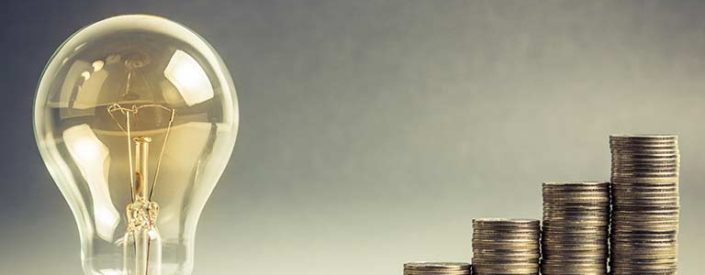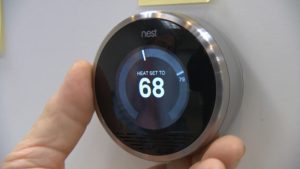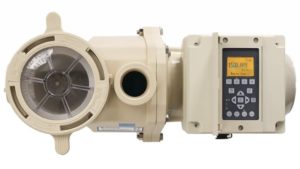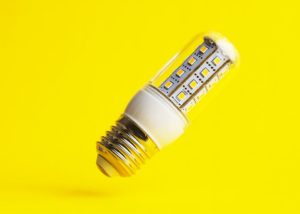
Top 5 Energy Efficient Upgrades
Energy Efficiency. No, it’s not the sexiest subject, but the right moves could line your pocket with some extra cash – and who wouldn’t want that? Whether you are buying a new home, or considering making an investment in your current home, efficiency upgrades are an understated investment that PAYS. If you are like most homeowners, you have a few energy-sucking appliances that are costing you hundreds or thousands of dollars per year. Start saving your hard earned money today and take look at the top 5 energy efficient improvements to consider for your home.
Air conditioner
Your air conditioner is usually the biggest energy hog in most homes, but this shouldn’t be a surprise. Today’s air conditioners are much more efficient than from 10 or 15 years ago, and the standard measurement of efficiency is always increasing as technology improves. A new air conditioner can set you back between $4,000-$7,000, which isn’t chump change for most people.

A “smart” thermostat in conjunction with a new air conditioner is the most efficient way to keep your home heated and cooled.
Inevitably, in order to put off this expense, people tend to repair, patch and keep their units running for as long as possible. This means before you know it you end up with a 15 or 20 year old AC unit which costs you an extra $100/month to run. The question becomes, at what point do you stop spending a few hundred bucks on repairs every year, and an extra $100 a month on the electric bill, and go with a new unit?
The answer comes down to this, how long do you plan to be in the home? If you plan to be in the home for a long time, it’s best to invest in the long term efficient unit right away. The amount of time an air conditioner can pay itself off is usually around 5-7 years. It’s not a terribly quick return on your investment, but after the one time up front cost, your monthly bills will drop, while also adding resale value to your home.
*Pro Tip –If you know your AC is going to need to be replaced, consider buying one in the winter when the demand is low, rather than waiting until summer when it breaks. The AC companies might be willing to give you a better deal than when you have no option with a broken AC unit in the dead of summer – Supply and demand at it’s finest.
Windows
Here in Arizona, homes built prior to 1980’s were built with single pane windows. It wasn’t until the 80’s when dual pane windows starting being installed. By 1990 just about every new home was using dual pane windows. When looking for a home, it’s something to consider. Single pane windows are not nearly as efficient as dual pane windows, for both keeping the cold out in the winter, and keeping the cool in during the summer.
The cost to replace windows varies quite a bit. Depending on the size, shape, type, and amount, window, it can cost anywhere from $400-$1,000 per window for replacement. Unlike the previous A/C improvement which is strictly a behind the scenes workhorse, upgrading your windows is an efficiency measure AND an aesthetic enhancement.
New windows will yield a roughly 85% ROI should you decide to sell your property. Depending on the current windows, the size of the home, and the type of replacement windows, you can expect to save anywhere between $200-$500 per year on your electric bill.
LED Bulbs
LED lighting has really come on strong the last couple of years, and for good reason. An LED bulb uses about 12-18% of the power of a traditional lightbulb. Here’s the problem, let’s say you head to the store for one burned out bulb. The option is a $1.00 incandescent, or a $5.00 LED. You might think to yourself, while I notice a difference in my utility bill from this 1 bulb? No, probably not. You keep the 4 bucks in your pocket and buy the regular old $1 bulb.
The way to approach LED lighting is think about a whole home conversion, it’s a bit of a compound effect, and the more lights you use, the more of an impact you will see. Additionally, the more LED bulbs you buy together, the less expensive they become, making converting the whole house at once the best way to approach it.
A good rule of thumb to get your money back from LED bulbs is anywhere from 3-5 years. As the technology becomes more and more available, the cost to purchase should ultimately come down making for an even sweeter improvement.
Solar Panels
We can’t talk about energy efficiency in Arizona without bringing up Solar Panels. I’ve already written an in depth blog on solar panels in Arizona which you can read HERE.
The short of it is this: Depending on the size of your house, direction it faces, which electric company services your property, own or lease the panels, you can have very different results. It’s an expensive upgrade, but it can almost eliminate your electric bill altogether. Getting an analysis on your home is going to be a key factor in the feasibility of going solar.
Pool Pumps
The number two energy hog behind an old Air conditioner is typically a pool pump. Older pool pumps run off of a single speed motor, it’s either on 100% or it’s shut off. Newer pool pumps are variable speed pumps and are MUCH more efficient. Expect about a 50% reduction in electricity that your pump uses. It accomplishes this by running at lower speeds for longer periods of time.

Variable speed pool pumps like the Pentair Intelliflo can save thousands of dollars in electric costs over it’s lifetime.
The cost of a new variable speed pool pump can vary, but expect to pay around $1,000 for a good pump. If your existing pool equipment needs any modification, you may need to pay for a few extra parts and install, so $1,500 is a more realistic cost to change out the pump. Depending on how inefficient your old pump was, the return on your investment is pretty quick, between 12-18 months.
While these 5 upgrades are by no means everything you can do, they encompass a large portion of your energy bill. Not to mention your electric service provider will offer rebates on many of these upgrades, making the cost of the upgrade even less. It’s funny – everything these days has become much more efficient, and uses less electric than ever before. Yet the electric company continues to raise rates on a regular basis. Who is really winning here!?



Comments are closed.